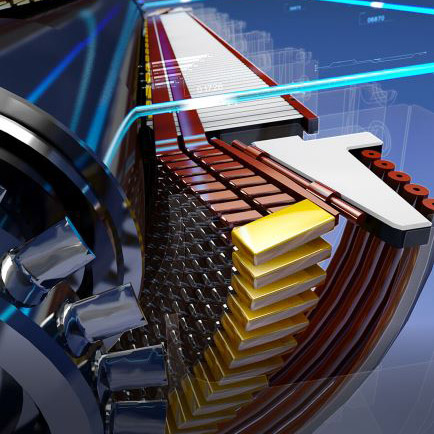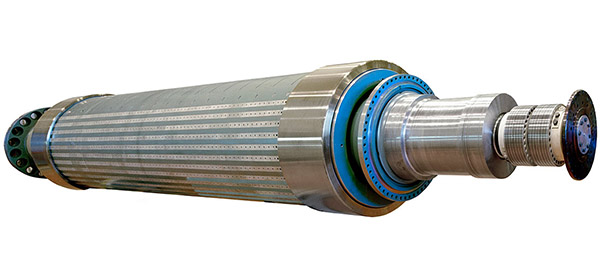Monitoring and diagnostics
Preventing the unplanned
Successful generator maintenance means controlling the risk of failures and unplanned downtime by making smart decisions based on more accurate inspection and operational data. Our monitoring and diagnostics solutions will make your maintenance smarter, faster and safer for you and your team.
- Generator health monitoring: Our flagship digital solution will reduce your risks of unplanned events with condition-based maintenance.
- Robotic inspection: Save time and money on your outages by inspecting your rotor in-situ.
- Pulsar testing technology: Save money and increase the safety of your teams during stator core testing operations.

Generator health monitoring (GHM)
GHM is a fully integrated and modular online, remote-monitoring suite available for any type of generator that allows continuous inspection and condition assessment as well as the earliest identification of any evolving issues.
With GHM solutions you will be able to implement a condition-based outage planning strategy that increases generators’ reliability and availability.

Generator health advisor (GHA)
GHA analyses the condition of your generator and enables you to decide on the best timing and scope content of your next outage. It can be applied on both OEM and other OEM generators.
With DCS data, expert knowledge, fleet lifecycle events of thousands of generators, and GHM data, GHA is the intelligent platform to process all inputs to detect key issues in your critical generator components e.g., risk of winding insulation failures.
GHA analytics enable a better control of possible unplanned downtime, support the best sequence of outages, help condition-based maintenance, secure deliveries of long lead time items for your next outage, and facilitate the decision for a rotor-in inspection instead of a rotor removal operation.

Robotic inspections
GE’s robots save unnecessary downtime in any power plant, by enabling inspection of generator components without removal of the rotor. The robotics package provided by GE includes rotor-in-place inspection with small robots, a precision tool that sends probes through air gaps to conduct critical testing of the generator components, as well as the retaining ring scanner.
As robots slide into the tight air gap between the rotor and stator, they record a video of the stator bore surface and the rotor body surface to look for signs of deterioration, such as delamination of the core packets, and check for signs of contamination. They also detect stator-core short circuits which, if undetected and not corrected, can lead to core burning and the need for costly, time-consuming repairs. Robots’ wedge-tightness probe flags the necessary fix of stator slot wedges. The scanning of retaining rings will allow the detection of stress corrosion cracking on inner and outer surfaces.

Stator core testing with PULSAR
The health check of a stator core is a routine test carried out during rotor-out inspections. Common testing methods like ELCID and HVRF tests can take long to carry out, adding safety challenges, costly logistics, and sometimes with challenging data (defects-detection and localization).
PULSAR is the alternative method that offers data accuracy, lesser power consumption than high-voltage tests, available power supply source (400 V), and fewer EHS risks (no high-voltage cables). Tests can be completed as fast as five hours, resulting to the reduction of an outage critical path.





